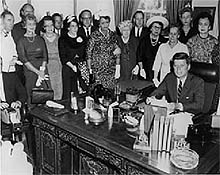Two years ago, when Stephanie Coontz’s  A Strange Stirring–a biography of Betty Friedan’s The Feminine Mystique–was released, Girl with Pen posted an online, week-long symposium looking back at Friedan and looking forward to the status of gender equality today, as guided by Coontz. We invite you to these pieces for background and reflections on Coontz and Friedan:
A Strange Stirring–a biography of Betty Friedan’s The Feminine Mystique–was released, Girl with Pen posted an online, week-long symposium looking back at Friedan and looking forward to the status of gender equality today, as guided by Coontz. We invite you to these pieces for background and reflections on Coontz and Friedan:
First, I asked two dear friends, one born in 1935, the other born in 1940, to tell me their experiences around the publication of Friedan’s TFM in 1963. The kicker: they’re both men.
Fueled by Coontz’s analysis, GWP cleared up some myths about TFM and encouraged readers to Test Your Feminine Mystique Cliche Quotient. In a Review of ‘Stirring’ Reviews, I summarized a reading of the initial reviews of Coontz’s book appearing in in The Wall Street Journal, The Washington Post, The New Yorker, and The New York Times, Salon, Ms., Bitch, and feministing.
Natalie Wilson (POP GOES FEMINISM) asked whether “Housewives” today are just as “Desperate” as in the era documented by Friedan and offers up pop-culture infused Thoughts on Coontz’s A Strange Stirring.
Finally, Deborah Siegel (MAMA W/PEN) waxed intergenerational and mused on How the Choices of Our Generation Are Shaped By the Last.
Happy reading!

 What’s the big deal about uptalk? In The College of William & Mary’s
What’s the big deal about uptalk? In The College of William & Mary’s  The
The  My colleague
My colleague  My colleague
My colleague Just about the most mundane thing to populate media lately has been the claims of the end of men. Even so, two weeks ago, I attended a useful conference at Boston University Law School on “
Just about the most mundane thing to populate media lately has been the claims of the end of men. Even so, two weeks ago, I attended a useful conference at Boston University Law School on “ This is a brief dispatch from teaching sex. I’m teaching a sociology class at Framingham State University this semester called Sex/Sexualities in Society. Students in my class also are enrolled in my colleague
This is a brief dispatch from teaching sex. I’m teaching a sociology class at Framingham State University this semester called Sex/Sexualities in Society. Students in my class also are enrolled in my colleague  Some nice work of my own: The second edition of
Some nice work of my own: The second edition of 
